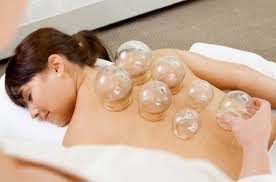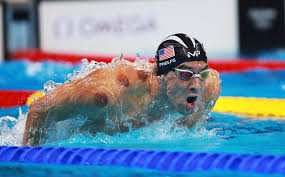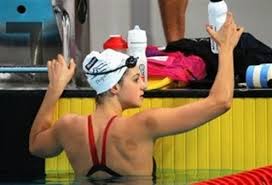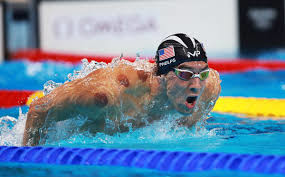The Olympics have brought cupping back into the forefront of media attention. This attention has also brought a tonne of questions about the circular bruises on Michael Phelps’ back. These perfectly circular bruises are injuries, even tho they might look bad. The bruises are actually caused by a therapeutic technique called “cupping.”
What is Cupping?
Cupping is a form of therapy used by swimmers, other elite athletes, and non-athletes as a form of therapy.  This technique is used to manage pain and soreness in the muscles. This technique is not often seen in Western media. The treatment originated in ancient China and is considered an alternative form of therapy. Cupping is favored by elite athletes because relief is felt quickly and it requires no medication.
This technique is used to manage pain and soreness in the muscles. This technique is not often seen in Western media. The treatment originated in ancient China and is considered an alternative form of therapy. Cupping is favored by elite athletes because relief is felt quickly and it requires no medication.
Small jars made of glass, are heated from the inside with a small flame. The flame extinguishes before it can touch the skin and the glass develops a strong suction on the skin. Oil is also placed on the skin to keep it supple during the therapy. The cups are kept in place or moved around the skin, usually for a minimum of five minutes.
Why Do Swimmers Use It?
Cupping, also known as myofascial decompression. It is used when swimmers have problems with their latissimus dorsi and teres major. It is used more so as a treatment for freestyle swimmers. Cupping provides a release between the  muscle and the fascia. Swimmers can lengthen their strokes and speed up their times. During the therapy, swimmers might be asked to gently copy their strokes to help the fascia release. In most cases, cupping does make a difference in performance.
muscle and the fascia. Swimmers can lengthen their strokes and speed up their times. During the therapy, swimmers might be asked to gently copy their strokes to help the fascia release. In most cases, cupping does make a difference in performance.
Along with helping to release fascia and muscle tension, cupping can also be used as a form of relaxation. For this, the cups are placed along the body’s meridian lines. This makes the back relax and relieves soreness and it can also help with emotions and psychological health. It is strange to think that an uncomfortable therapy could actually be relaxing. However cupping, done the right way can be incredibly relaxing despite the discomfort.
How Does Cupping Help Swimmers?
Olympic athletes, like Michael Phelps, appreciate the benefits of cupping. Lactic acid build-up after intense races and practices and be relieved quickly. As a bonus, it helps speed up detoxification in the muscles. Muscles that are spasming also relax by using cupping. Plus inflammation is also decreased with this form of therapy. Even swimmers who are not Olympians can benefit since it increases circulation and drainage in the lymph nodes.
What Precautions Should You Know?
There are benefits that make it popular with athletes and people who are interested in alternatives to Western medicine. However, there are some cautions that come with it. Cup marks will last up to a week. Since the cups open up the pores, it is recommended to avoid moving in and out of extreme temperatures. Pregnant women should not have this therapy performed on the low belly and back. It is also not recommended for people who are taking blood-thinning medication or if they have sensitive or damaged skin.
For people who are healthy cupping, the benefits are extraordinary. The relaxation response is amazing, as cupping increases oxygenation, which relieves pressure in the muscles. The
 detoxification effects of cupping are noticeable – up to four inches deep into the tissues. Range of motion increases as circulation increases to break up any scar tissue and adhesions where injuries have happened.
detoxification effects of cupping are noticeable – up to four inches deep into the tissues. Range of motion increases as circulation increases to break up any scar tissue and adhesions where injuries have happened.
This therapy is available all over the world and must be performed by a trained therapist. Make sure you speak with your doctor before you decide whether or not to try cupping and if it is an appropriate treatment for your physical conditions.
